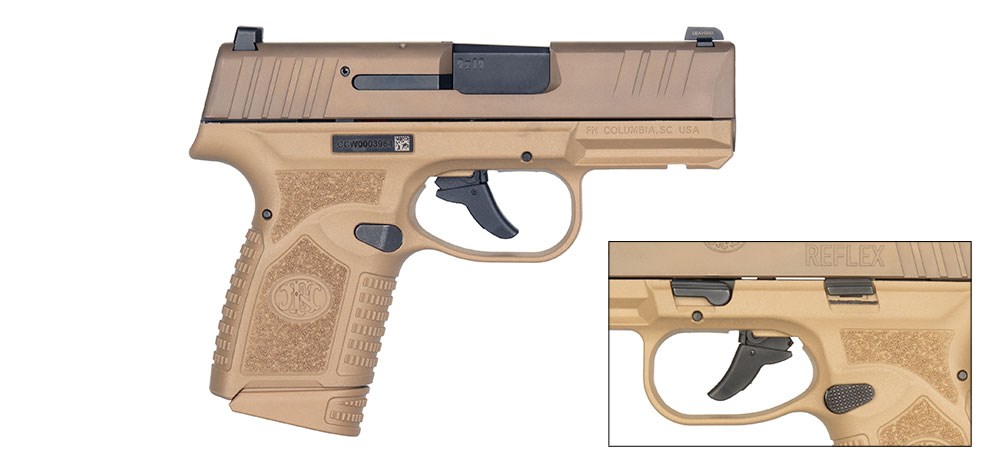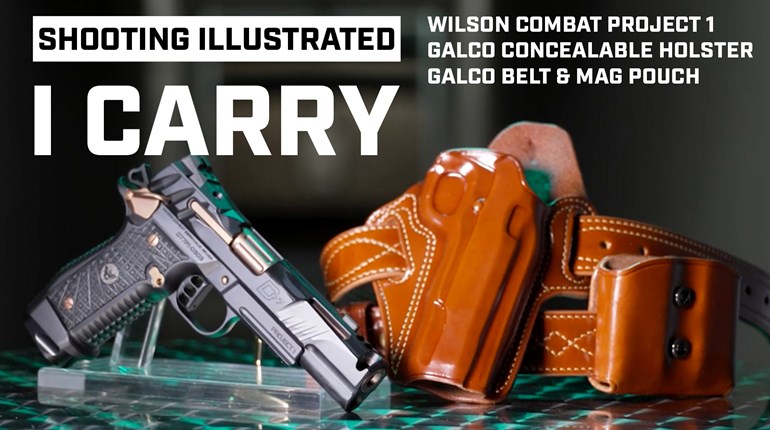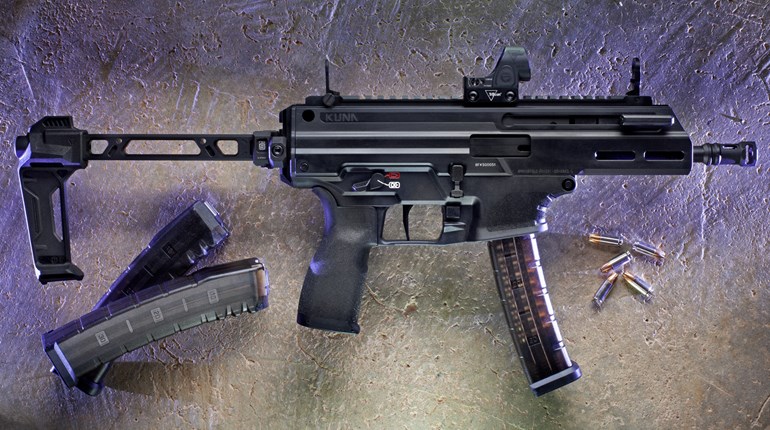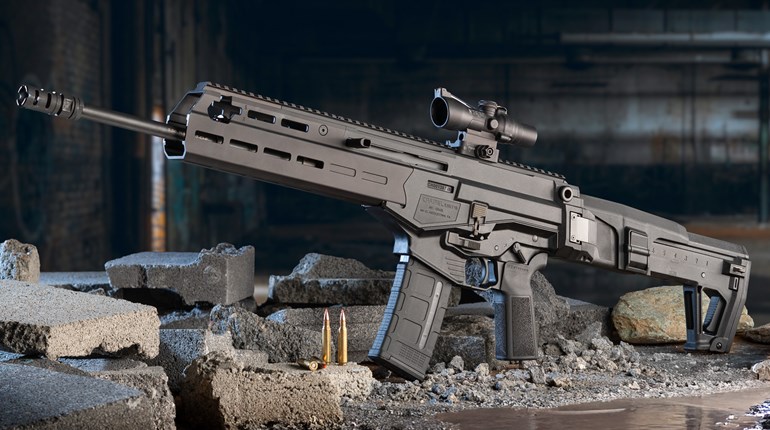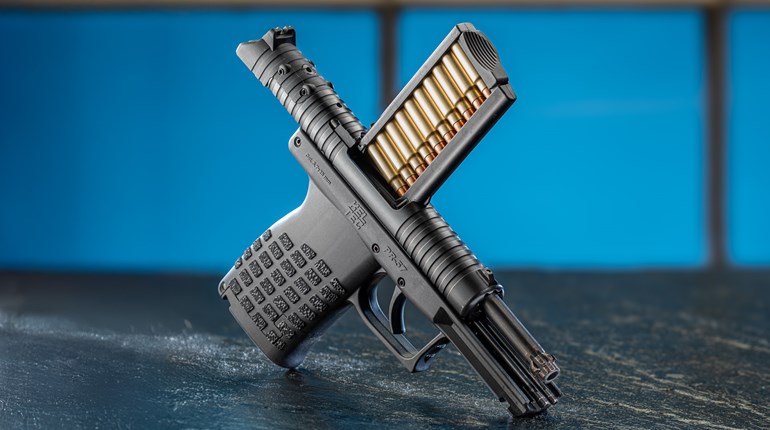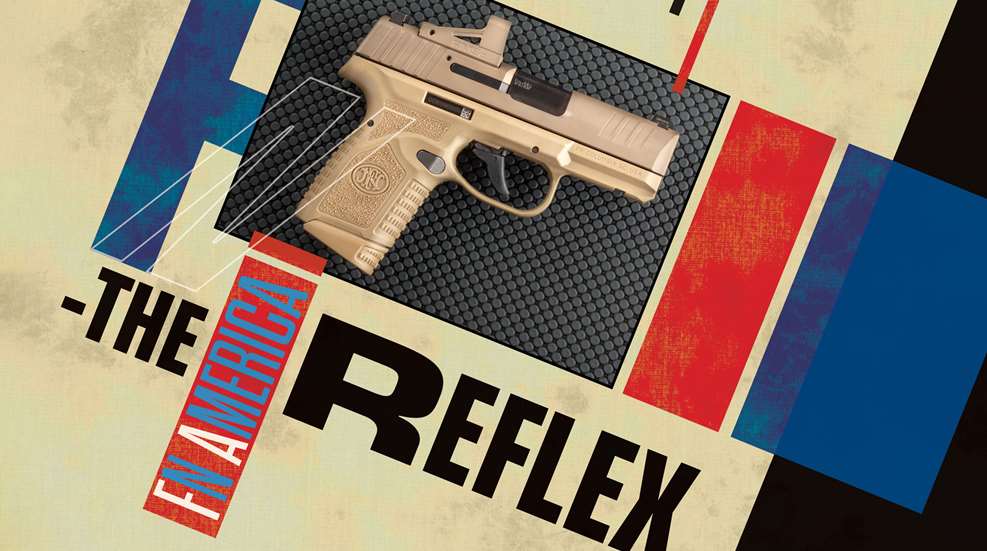
According to the dictionary, a “Reflex” is an automatic or unthinking response to an external stimulus.
That makes the chosen nomenclature of FN America’s newest pistol only half true. While it’s certainly a response to outside stimuli, it’s far from unthinking. We should probably start by delving into the market forces that brought us to this point.
If we dig back to the dawn of the modern “Shall-Issue” concealed-carry movement in the mid-1980s to the late 1990s, the 9 mm handguns intended for concealed carry fell into two categories: On the one hand, you had pistols derived from the LE/mil duty sidearms of the era. Take a Glock G17 or SIG Sauer P226 and whack some length off the grip frame and slide and you wound up with the Glock G19/26 or the SIG P228/229, which were perfectly sized for detectives, plainclothes officers—and private citizen CCW toters willing to perform the lifestyle changes required to “dress around the gun.”
The other variety of 9 mm CCW pistols were designed from the ground up as teeny single-stack guns, and these became favored by people with more need to dress like they weren’t hiding a gun, whether undercover LE officers or private citizens in states with penalties for “printing.”
This balance of minimum size on the one hand and maximum capacity on the other remained in tension for almost 20 years until SIG Sauer released its P365, which I reviewed in these pages when it debuted some five years back.

A whole new genre of handguns was created: “Micro-Compacts” that could still compete with the tiny single-stacks in the category of size, but managed to cram a double-digit round count into their staggered magazines. In short order, the P365 was joined by the Springfield Armory Hellcat and Smith & Wesson Shield Plus, among many other examples from nearly every handgun manufacturer—and now FN has its Reflex.
The new Reflex from FN America hit the market in the spring of this year with basic stats similar to the other inhabitants of the category. It’s a 9 mm pistol that measures slightly larger than 6 inches in overall length and crams a flush-fit 11-round staggered magazine into a sub-5-inch height. Attentive readers will note that these dimensions drop it roughly into the overall concealment envelope of a J-frame-size revolver, albeit with a width much narrower than that imposed by a wheelgun’s cylinder.
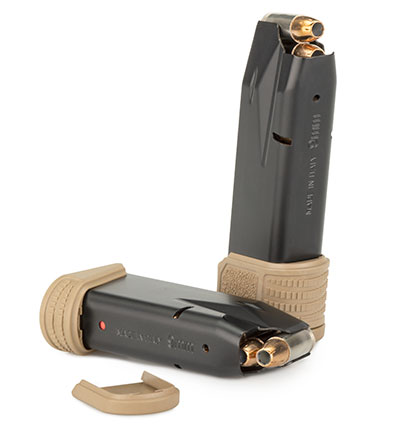
At launch, the Reflex is available in two basic variants, regular and MRD (which is FN-speak for “cut to accept a slide-mounted micro red dot”), differing by 60 bucks in the MSRP department.
At first glance, they look like 509s that someone has left in the dryer too long, but a closer examination reveals that these are actually two very different pistols, and they are far from just another “me too” P365/Hellcat clone.
The Reflex ships, like other FN pistols, in a folded cardboard box, but upon opening the box the buyer is greeted with the pistol and accessories lying in a blown plastic tray, rather than the zippered-nylon pouches common to FN handguns over the last several years. If this is an effort to keep prices competitive, it definitely helps, because MSRP for the base model (which includes a Hi-Viz tritium night sight in the front dovetail) comes in at a mere $599.
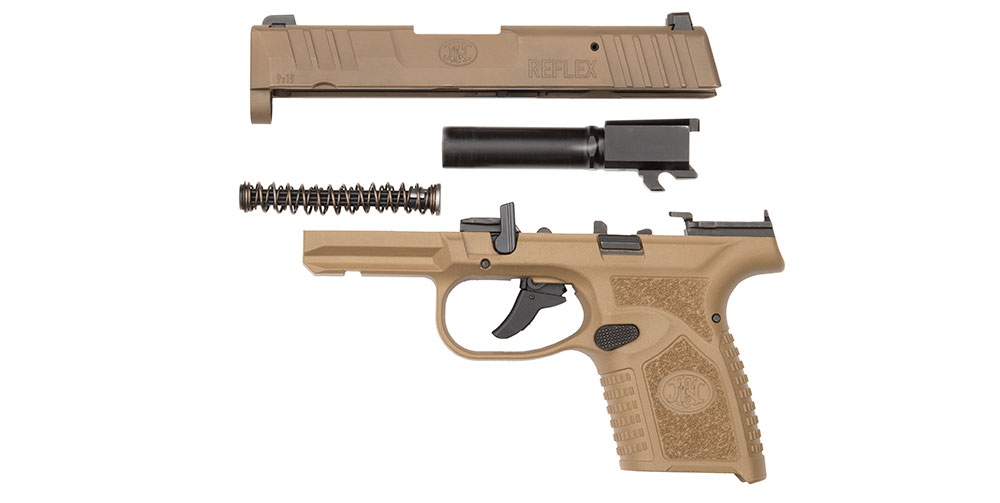
I say “base model,” because, as mentioned, the Reflex comes in two variants, regular and MRD. Why pistol manufacturers insist on including non-optics-cut models in 2023 is beginning to be a mystery. While the base model saves the buyer 60 bucks versus the MRD variant, it comes at the expense of a bit of SKU bloat for the gunmaker. Maybe some people just really hate dot cuts. Who’s to say?
At any rate, the top of the slide has a sighting plane milled flat between the fore and aft dovetails. If you have the MRD version, there’s a cap covering the optics cut secured with a pair of Torx screws. At the rear of the chamber hood, in the top-center of the ejection port, is a small rectangular cutout that serves as a loaded-chamber indicator by providing direct visual observation of a cartridge case.
The nose of the slide is beveled to aid in fumble-free holstering and features three broad, shallow-angled grasping grooves for people who like to walk on the wild side and charge their subcompact semi-automatics by grabbing them up near the loud end. You do you; for the rest of us, there are matching sets of five angled cocking serrations back in the usual place at the rear of the slide.
The most unusual feature of the slide in this current year is that the rear is one solid piece of metal, with no removable slide cover plate. If you want to have some goofy skull or some other logo staring at you while you shoot, you’re going to have to draw it there yourself.

Moving down to the frame, we notice a few more differences from the bigger 509 series. For starters, and most likely in the interest of compactness, the Reflex lacks ambidextrous slide-release levers. South- paws will be using their trigger finger to actuate it. Also, rather than use the truly ambidextrous magazine release like that on the 509 series, the Reflex has a more conventional reversible button. As small as the grip on the pistol is, this makes sense, since there would be almost no way to prevent the grip of anyone who wears a size medium or large glove from inadvertently hitting the offside mag release under recoil.
The magazines retained by those buttons are either a flush-fit 11-round version or an extended 15-rounder. The latter features a textured collar that blends with the grip, while the former ships with a pinkie-rest floorplate attached, but included in the box is a flat floorplate, too, allowing for maximum concealability.
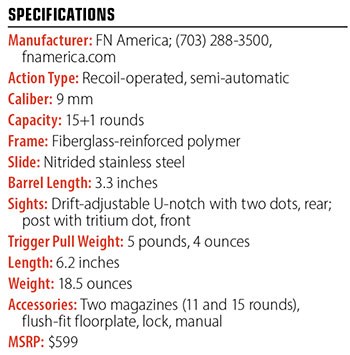 The sides of the grip frame have the sort of sandpaper molded-in texture common on FN handguns these days, while the front- and backstrap have the trademark FN checkering. All in all, it makes for a grippy little package, which is good on a teeny blaster chambered in a service caliber.
The sides of the grip frame have the sort of sandpaper molded-in texture common on FN handguns these days, while the front- and backstrap have the trademark FN checkering. All in all, it makes for a grippy little package, which is good on a teeny blaster chambered in a service caliber.
On the frame’s dustcover is an accessory rail that will take compact lights of the Streamlight TLR-7 Sub or SureFire XSC variety. You don’t even need to shop for a special one to fit the Reflex, since FN wisely just went ahead and spec’d the Reflex’s accessory rail to match that of the Glock G43X/48.
The trigger features a two-piece hinged design to protect from inertial discharges when dropped, although rather than being hinged in the middle as is familiar to M&P or FN 509 shooters, the entirety of the trigger shoe forms the hinged part. In other words, it feels like a regular trigger to the shooter’s fingertip—a nice touch. On the test sample, it broke surprisingly cleanly at 5.25 pounds.
On the left side of the frame (for the shooter), just above the trigger guard, is the disassembly lever. To fieldstrip the pistol, clear it, lock the slide to the rear, drop the mag, ensure the chamber is empty, rotate the lever upward a bit more than a quarter turn, release the slide and release it forward off the frame. No pulling of the trigger is required and, in fact, the pistol can’t be disassembled if the trigger has been pulled.
Once the slide is off the frame, the reason behind this is apparent, as is the lack of a slide-cover plate on the rear: Inside the frame is a teeny little hammer. By making the Reflex hammer-fired, FN managed to get a great trigger pull, avoids having to pull the trigger to disassemble (something some organizations have grown leery about) and also exploits the slide-braking properties of the hammer to get away with a lighter recoil spring than a pistol this small would otherwise have required. In some circles, there’s also institutional reluctance to use striker-fired pistols in roles where deep concealment, such as pocket carry, might be required. A thumb-safety-equipped Reflex is even in the works.
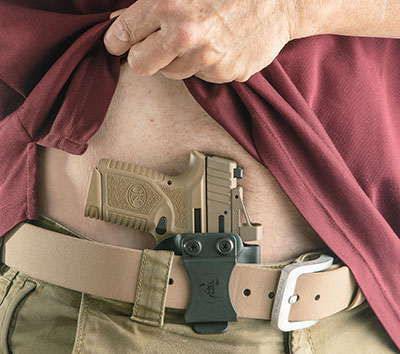
In addition to being hammer-fired, another nice touch on the Reflex is that the optics-ready version doesn’t use adaptor plates. Instead, the Reflex MRD ships with a baggie containing a torx wrench and two sets of screws (with thread locker already applied). One set of screws works with the Holosun 507k & SIG Sauer Romeo Zero, and the other is used to mount a Shield RMSc, Riton 3 TACTICS MPRD 2 or Swampfox Sentinel. Slowly but surely, the industry is moving toward a couple standardized dot footprints and a couple standardized sight dovetails and I could not be happier.
So how does it shoot? Well, let’s get the ugly part out of the way first. “Brisk but manageable” has been a hoary cliché for recoil in gun writing for so long that it’s a running joke on the internet, but there are places where it applies. One of those places would be if one were to use the flat floorplate on the Reflex’s 11-rounder for maximum concealability and then load the pistol with +P duty loads—and the Reflex is expressly rated for use with +P 9 mm ammo.
Grip texture can only do so much when you’re hanging on with two fingers to a sub-20-ounce pistol and cutting loose with hot 124-grain +P Gold Dots or HSTs. It’s not quite as unpleasant as shooting +P ammo in an Airweight J-frame, but you definitely don’t stand around wondering if the gun went off or not.
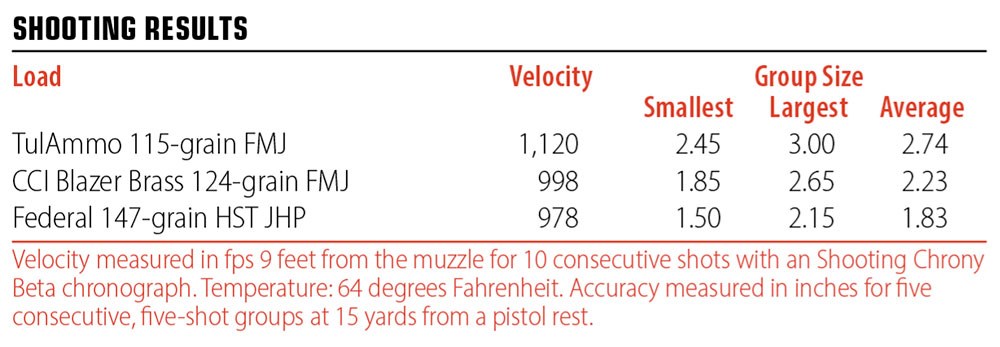
On the other hand, fit the pinkie-rest floor plate—or use the 15-round magazine—and +P ammo becomes more manageable. With standard-pressure ammo, it’s actually plenty controllable. The trigger made accurate work quite easy. Eight-inch plates at 20 yards were a breeze, and off the bench I managed a couple 2-inch and smaller 15-round groups.
The test gun digested 400 rounds of 124-grain Blazer Brass FMJ, as well as another 200 rounds of assorted TulAmmo and Sellier & Bellot ball ammo, and 190 rounds of premium jacketed hollowpoints with no malfunctions of any sort.
Overall, this is a viable addition to an increasingly popular niche. Not only is it a practical backup or deep-concealment piece for those who already carry the larger FN 509 series as their primary duty or CCW pistol, but it’s also a great option for shooters with smaller hands who might feel uncomfortable operating a striker-fired pistol. As long as they tailor the load they carry to their recoil comfort level, they likely won’t be disappointed.